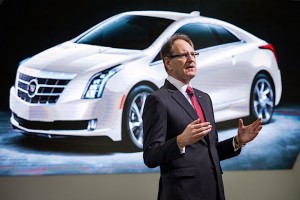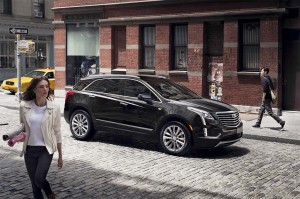Cadillac is trading the Big Apple for the Motor City, returning to its spiritual Michigan home after a brief flirtation with the bright lights of New York that was meant to get it closer to one of the country’s largest luxury car markets.
The move to New York was announced four years ago this month by former Cadillac President Johan de Nysschen and there has been widespread speculation since his ouster early this year that the experiment might come to an end.
Cadillac is beginning one of the most aggressive product rollouts in its history, the new XT4 SUV being the first of a wave that will see an additional product come to market every six months through the end of the decade. The need for better co-ordination between New York-based marketing and the rest of the Cadillac organization – which remained in Detroit – is prompting the General Motors luxury brand to give up its headquarters in New York City and move back to Detroit.
Steve Carlisle, de Nysschen’s successor, told the Wall Street Journal the move was necessary because, “We’ve got to think about how we take inefficiencies out of the communication process between the Cadillac team and the GM partners.”
(Cadillac expanding V-Series – even as it drops ATS-V, CTS-V models. Click Here for the story.)
Carlisle replaced de Nysschen as Cadillac’s president last April. During his tenure the South African-born de Nysschen championed the New York headquarters, which he viewed as a stepping stone towards changing Cadillac’s image.

Former Cadillac President Johan de Nysschen's plan to move the brand closer to the country's largest luxury market is being unwound.
Unlike de Nysschen, who came to GM after a distinguished career at Audi and Infiniti, Carlisle is a GM lifer, having served at several different executive posts before taking over at Cadillac.
During his interview with the Journal, Carlisle cited the “inefficiencies” created by having a headquarters 600 miles from the rest of its operations, while discussing the new vehicles Cadillac is preparing to launch between now and the end of 2021. The first of those, the Cadillac XT4, is the first compact sport-utility vehicle the automaker has ever produced. Reflecting the broader shift in the automotive market, Cadillac plans to shift away from sedans, coupes and sports cars to focus more on utility vehicles.
(Click Here for more about Cadillac going small with new XT4.)
The XT4 will also be produced and sold in China, which GM considers the key to the future growth of the Cadillac brand. Under de Nysschen, sales in the Asian nation mushroomed, but demand stagnated in the U.S. Cadillac’s sales have dropped 12% since 2014, and in that same time period, the brand’s share of the luxury auto market has dropped from 9.3% to 7.7% — a key reason, GM insiders say, the executive was ousted.
With his departure, justification for being in New York appeared to vanish, though Carlisle initially appeared to support staying on in the Big Apple. It isn’t clear if he authorized the move or if it was initiated by others at GM headquarters in Detroit’s Renaissance Center. There are some indications the decision was ultimately handed down by Dan Ammann, the automaker’s president and the man who negotiated de Nysschen’s departure last spring.
“Cadillac’s move to New York made sense in theory, but in practice it didn’t address what Cadillac really needs to turn the brand around — a laser focus on the product,” said Jeremy Acevedo, Edmunds’ manager of industry analysis. “Moving the headquarters to Warren, where the heart of GM’s design and engineering teams are, is a big statement that Cadillac is serious about bringing the brand and product visions together.”
The slow growth of U.S. sales was just one of the factors leading to the executive’s ouster. Cadillac dealers in the U.S., who were often at odds with de Nysschen, had complained about key elements of his strategy, notably a policy of pushing up prices to rival European rivals, despite soft demand.
(To see more about Cadillac cutting sedans from its line-up, Click Here.)
Cadillac now joins moves made by other manufacturers hoping to relocate and connect with the heartbeat of their markets. Late in the 1990s, former Ford Motor Co. CEO Jac Nasser authorized moving the company’s luxury brands, collectively known as the Premier Automotive Group, to the Los Angeles suburb of Irvine. That lasted for only a few years before the marques were returned to Michigan. And, as the auto industry struggled through the Great Recession, later CEO Allan Mulally ultimately sold off the Jaguar, Aston Martin, Land Rover and Volvo brands, leaving only Lincoln in the Ford portfolio.
(Paul A. Eisenstein contributed to this report.)

